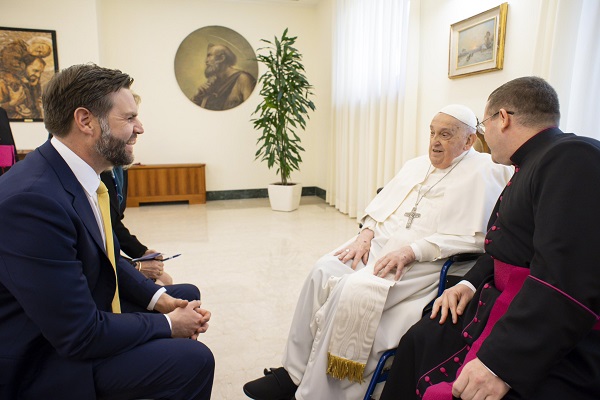Alberta
Three quarters of Albertans are double vaccinated. Province launches third booster shot.
Vaccine eligibility expands, milestone hit
More than 75 per cent of eligible Albertans are now fully immunized against COVID-19 while thousands more Albertans are now eligible for a third COVID-19 vaccine dose.
Starting Oct. 6, Albertans age 75 and older and First Nations, Inuit and Métis people age 65 and older can begin booking for a third dose at least six months after their second dose.
Acting on the recommendations of the Alberta Advisory Committee on Immunization, Alberta is one of the first provinces in Canada to offer third doses of vaccine to these age groups. Older Albertans, along with those who are immunocompromised or in seniors supportive living, are receiving third doses because of their increased risk of hospitalization, death or other severe outcomes from COVID-19.
Health officials will continue to monitor all emerging evidence on vaccine effectiveness across Canada and around the world.
“We are pleased to offer additional protection for those Albertans who are most at risk of serious illness from COVID-19. Getting fully vaccinated is not only important to help protect yourself and others, but is also vital to protecting our health-care system.”
“We know that COVID-19 can be especially dangerous for our older populations and continue to do everything we can to keep them safe. Over three-quarters of eligible Albertans are now fully immunized. I encourage everyone to think of their family, friends and neighbours and get fully vaccinated as soon as possible.”
“The data shows that seniors may experience waning immunity approximately six months after their second dose. A third dose will be beneficial for our elderly population to ensure they have the best protection from COVID-19 as we move through this fourth wave. At this time, the evidence does not support a need for additional doses for the general population, but we continue to monitor the data and will adapt as new evidence emerges.”
Double dose milestone hit
Currently, 75.1 per cent of eligible Albertans are fully vaccinated against COVID-19 after receiving two vaccine doses.
In addition, 84.5 per cent of eligible Albertans have received at least one dose. More than 500,000 first, second and third doses have been administered since Sept. 3.
All eligible Albertans are strongly encouraged to get fully vaccinated soon as possible to protect themselves, their families and their communities.
Albertans eligible for third doses
In addition to Albertans aged 75 and older, and First Nations, Métis and Inuit people aged 65 and older, third doses are available for seniors living in congregate care. These individuals are at the highest risk of severe outcomes and potential spread within congregate living sites, and will receive their doses on-site.
A number of immunocompromising conditions also qualify for an additional dose at least eight weeks after a second dose. For a full list, visit alberta.ca/vaccine.
Additional mRNA doses are also available to Albertans who are travelling to a jurisdiction that does not accept visitors who have been vaccinated with Covishield/AstraZeneca or mixed doses.
Anyone in the general population who receives a complete two-dose COVID-19 vaccine series can be confident that they have strong protection against severe illness and hospitalization due to COVID-19.
Booking a third-dose appointment
Eligible Albertans aged 75 and older and First Nations, Metis and Inuit persons living off-reserve can book appointments for third doses at participating pharmacies and physician clinics by using the booking system at alberta.ca/vaccine. Albertans can also call 811, participating pharmacies or participating physicians’ offices, or find a community pharmacy providing walk-in vaccinations.
Individuals aged 65 and older who live on a First Nations reserve will be able to access third doses through local public health clinics on-reserve.
If you are deemed ineligible due to your age, or six months has not passed since receiving your second dose, you will be asked to re-book when eligible.
Outdoor gathering restrictions
To reduce the spread of COVID-19, an updated public health measure will apply to all outdoor private social gatherings effective Oct. 6:
- Outdoor private social gatherings are limited to a maximum of 20 people, with two-metre physical distancing between households at all times. This is a decrease from the previous limit of 200 attendees.
- All other previously public health measures remain in place at this time.
- Additional information on all the public health measures is available at alberta.ca/covid19.
Alberta
CPP another example of Albertans’ outsized contribution to Canada

From the Fraser Institute
By Tegan Hill
Amid the economic uncertainty fuelled by Trump’s trade war, its perhaps more important than ever to understand Alberta’s crucial role in the federation and its outsized contribution to programs such as the Canada Pension Plan (CPP).
From 1981 to 2022, Albertan’s net contribution to the CPP—meaning the amount Albertans paid into the program over and above what retirees in Alberta received in CPP payments—was $53.6 billion. In 2022 (the latest year of available data), Albertans’ net contribution to the CPP was $3.0 billion.
During that same period (1981 to 2022), British Columbia was the only other province where residents paid more into the CPP than retirees received in benefits—and Alberta’s contribution was six times greater than B.C.’s contribution. Put differently, residents in seven out of the nine provinces that participate in the CPP (Quebec has its own plan) receive more back in benefits than they contribute to the program.
Albertans pay an outsized contribution to federal and national programs, including the CPP because of the province’s relatively high rates of employment, higher average incomes and younger population (i.e. more workers pay into the CPP and less retirees take from it).
Put simply, Albertan workers have been helping fund the retirement of Canadians from coast to coast for decades, and without Alberta, the CPP would look much different.
How different?
If Alberta withdrew from the CPP and established its own standalone provincial pension plan, Alberta workers would receive the same retirement benefits but at a lower cost (i.e. lower CPP contribution rate deducted from our paycheques) than other Canadians, while the contribution rate—essentially the CPP tax rate—to fund the program would likely need to increase for the rest of the country to maintain the same benefits.
And given current demographic projections, immigration patterns and Alberta’s long history of leading the provinces in economic growth, Albertan workers will likely continue to pay more into the CPP than Albertan retirees get back from it.
Therefore, considering Alberta’s crucial role in national programs, the next federal government—whoever that may be—should undo and prevent policies that negatively impact the province and Albertans ability to contribute to Canada. Think of Bill C-69 (which imposes complex, uncertain and onerous review requirements on major energy projects), Bill C-48 (which bans large oil tankers off B.C.’s northern coast and limits access to Asian markets), an arbitrary cap on oil and gas emissions, numerous other “net-zero” targets, and so on.
Canada faces serious economic challenges, including a trade war with the United States. In times like this, it’s important to remember Alberta’s crucial role in the federation and the outsized contributions of Alberta workers to the wellbeing of Canadians across the country.
Alberta
Made in Alberta! Province makes it easier to support local products with Buy Local program

Show your Alberta side. Buy Local. |
When the going gets tough, Albertans stick together. That’s why Alberta’s government is launching a new campaign to benefit hard-working Albertans.
Global uncertainty is threatening the livelihoods of hard-working Alberta farmers, ranchers, processors and their families. The ‘Buy Local’ campaign, recently launched by Alberta’s government, encourages consumers to eat, drink and buy local to show our unified support for the province’s agriculture and food industry.
The government’s ‘Buy Local’ campaign encourages consumers to buy products from Alberta’s hard-working farmers, ranchers and food processors that produce safe, nutritious food for Albertans, Canadians and the world.
“It’s time to let these hard-working Albertans know we have their back. Now, more than ever, we need to shop local and buy made-in-Alberta products. The next time you are grocery shopping or go out for dinner or a drink with your friends or family, support local to demonstrate your Alberta pride. We are pleased tariffs don’t impact the ag industry right now and will keep advocating for our ag industry.”
Alberta’s government supports consumer choice. We are providing tools to help folks easily identify Alberta- and Canadian-made foods and products. Choosing local products keeps Albertans’ hard-earned dollars in our province. Whether it is farm-fresh vegetables, potatoes, honey, craft beer, frozen food or our world-renowned beef, Alberta has an abundance of fresh foods produced right on our doorstep.
Quick facts
- This summer, Albertans can support local at more than 150 farmers’ markets across the province and meet the folks who make, bake and grow our food.
- In March 2023, the Alberta government launched the ‘Made in Alberta’ voluntary food and beverage labelling program to support local agriculture and food sectors.
- Through direct connections with processors, the program has created the momentum to continue expanding consumer awareness about the ‘Made in Alberta’ label to help shoppers quickly identify foods and beverages produced in our province.
- Made in Alberta product catalogue website
Related information
-

 International2 days ago
International2 days agoPope Francis has died aged 88
-

 2025 Federal Election1 day ago
2025 Federal Election1 day agoOttawa Confirms China interfering with 2025 federal election: Beijing Seeks to Block Joe Tay’s Election
-

 International2 days ago
International2 days agoPope Francis Dies on Day after Easter
-

 International2 days ago
International2 days agoJD Vance was one of the last people to meet Pope Francis
-

 COVID-191 day ago
COVID-191 day agoNearly Half of “COVID-19 Deaths” Were Not Due to COVID-19 – Scientific Reports Journal
-

 2025 Federal Election1 day ago
2025 Federal Election1 day agoHow Canada’s Mainstream Media Lost the Public Trust
-

 Business2 days ago
Business2 days agoCanada Urgently Needs A Watchdog For Government Waste
-

 Energy2 days ago
Energy2 days agoIndigenous-led Projects Hold Key To Canada’s Energy Future






